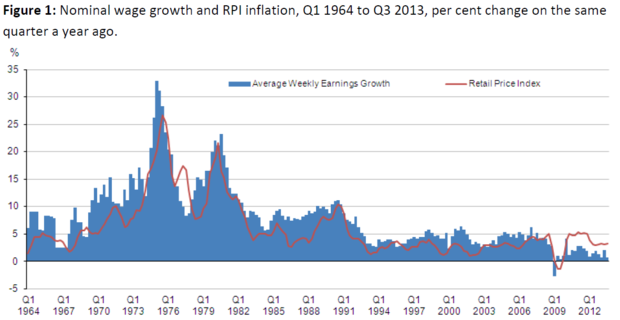Britain’s record real wage crisis explained

Inflation has been outstripping wage growth consistently since 2010, meaning that in real terms wages have been falling since then.
It's the longest period since such records began in 1964, says the Office for National Statistics (ONS), as inflation measured by the Retail Price Index remains stubbornly above average weekly earnings growth.
The ONS identifies three possible reasons for the incomes hit.
Hours worked
From 2008 onwards the downturn saw falling hours exerting downwards pressure on real earnings, now they're on the up, and putting upwards pressure on wages "for much of the most recent period."
A large part of the hours story is that of the composition of UK jobs. Part-time work rose as a proportion of total employment after 2008, and is now falling back down.
Productivity problem
The UK's productivity growth has been in the doldrums for years now by international standards.
Wages earned depend in large part on the productivity of the worker, so as output of a firm declines, then so should wages or employment.
That relationship is clear before 2008, but after the crash the relationship appears to break down.
The ONS says that the difference might stem from a divergence in the product and consumption wage.
The consumption wage is an estimate of the real wage deflated using consumer prices. It therefore represents the real value of wages seen from an employee’s perspective
The product wage is a measure of the real wage paid to a worker expressed in terms of what that worker produces in terms of the quantity of goods and services that their earnings will purchase.
The divergence between product wage growth and consumption wage growth, minus one per cent and -5.5 per cent respectively from the first quarter of 2010 to the third quarter of 2013, is what the ONS terms a "wedge".
It reflects "reflects differences between the rates of inflation captured by the GDP deflator and the CPI" says the ONS, and shows that "cost of wages to the employer is perceived to have fallen by less than the value of those same wages to the employee."
Workforce composition
While the ONS says the compositional effect "has been relatively small", shifts from higher paid workers in the manufacturing sector towards lower paid service jobs saw a "small negative effect" on real wage growth between January 2009 and June 2010.
That has now been offset by the reverse effect in the following year.